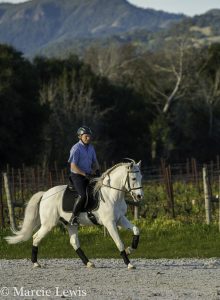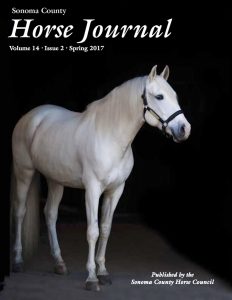For many, Lusitanos are the horses of dreams. Lusitanos combine beauty and power. Grace and athleticism. Kindness and intelligence. Lusitanos exemplify the best equine essence making them exquisite to ride and fun to be around. This Portuguese horse breed is gaining popularity in the United States and around the world because of their versatility, trainability and presence.
You can easily spot a Lusitano who typically stands between 15.2 and 16.2 hands with a convex body shape and facial features and strong musculature. They can be any solid color. Most are gray, bay, chestnut, palomino or buckskin and usually have long flowing manes and tails.
The Iberian Peninsula is the original home of these magnificent horses. Lusitanos are closely related to Andalusians, their Spanish cousins. They trace their ancestry to prehistoric times and have since been prized as superior mounts for thousands of years. Romans named them after the Latin word for this area, Lusitania.
The Moors ruled this area for several centuries starting around 700 AD. They introduced the Barb from North Africa. This infusion further contributed to the hardiness and endurance of Lusitanos. During the Renaissance and Baroque period, they were used as working and cavalry horses and as mounts for the nobility throughout Europe. It was important for the aristocracy to ride horses that were noble in spirit and appearance, and Lusitanos were well suited for those purposes.
Portuguese breeders today keep the origins of their horses in mind when they choose which individuals to breed. Whether the breeding farms are big or small, they follow five breeding principles: blood, beauty, functionality, temperament and handling.
Keeping the pedigrees true to their origins is important. Originally, Lusitanos needed to be both beautiful and able to work on the ranch or battlefield and in the arena. Their willing and brave dispositions are their most noted qualities making them great partners.
It’s impossible to imagine the Portuguese culture without their national horse as a fundamental part. Whether you are visiting a breeding farm, training stables, or one of their famous horse fairs, you see not only the admiration for their horses, but a pride in how they have shaped the Portuguese identity. It’s hard to miss the mutual respect and partnership exhibited between a Portuguese horseman or horsewomen and their horses. Almost all of the riding horses are stallions, another testament to their good temperaments.
Luckily for us, we get the benefit of centuries of thorough training and breeding traditions when we are in the presence and astride a wonderful Lusitano. Their utility as dressage horses, ranch horses, cavalry mounts, or bullfighting horses has led them to be versatile in what they can do. We see them in all sorts of disciplines ranging from dressage, western horsemanship, jumping, and driving. The classical origins of their training are on display at the Portuguese School of Equestrian Art, an institution like the Spanish Riding School in Vienna. They also excel at working equitation, a sport recently introduced in the United States that combines dressage training and obstacles. These obstacles are based on what is found on a ranch including gates, bridges, livestock pens, etc… The handiness required for working equitation means that Lusitanos excel at this sport.
The quality of the horses is carefully maintained through the national breed registry in Portugal. (cavalo-lusitano.com). Affiliate organizations exist in countries where Lusitanos are bred. In the United States, Lusitanos are registered through the International Andalusion and Lusitano Horse Association. (iahla.org)
Imagine yourself on a Lusitano. They are the horses of dreams.
– Originally published in Sonoma County Horse Journal Spring 2017 issue

